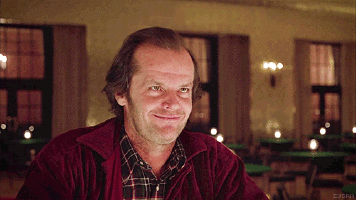In tribute to Halloween passing over the weekend, I thought it would be interesting to provide perspective on coaching an individual in becoming more aware of themselves and their surroundings, using the horror film genre. Horror movies have always provided clear examples of coaching opportunities and a lack of awareness on the part of both the audience and the characters.
In the horror movie making business, a great film maker has the ability to include the audience in the cast. Those movies most often provide an experience for the movie watcher that leaves a lasting impression. Two movies in particular, The Sixth Sense and The Shining, actually coached the audience in becoming more aware. There were key moments in both films when the audience became aware of the events surrounding the characters that changed the perspective of the films and sucked the audience in, for what my colleagues (Si Alhir, Mark Ferraro, and Don Gould) like to call an ‘ah-ha’ moment. In the Sixth Sense, when Haley Joel Osment (playing the role of Cole Sear) reveals to Bruce Willis (playing the role of Malcolm Crowe) “I see dead people”. Boom goes the dynamite! Everything quickly came into focus for the audience, allowing our sudden awareness of the situation to begin wanting to coach Bruce Willis’ character to help him see the truth about himself. It took years later for the movie industry and audiences to become aware that M. Night Shyamalan may have gotten lucky with this script, as his follow up films quickly began to deteriorate in both quality and substance.
Similarly in Stephen King’s The Shining, the audience is initially drawn into paying close attention to Jack Nicholson’s character (Jack Torrence), as he seems to pose the greatest threat to his family while living in the hotel. However, after the Inn Keeper, Dick Hallorann asks Danny Torrance “How’d you like some ice cream, Doc?” the audience becomes aware that Danny has a deeper connection to the hotel, and Jack is a mere pawn in the events to follow (another ‘ah-ha’ moment). On the flip side, the audience is inclined to want to coach Wendy Torrance in guiding her to safety.
Both films are powerful in providing a level of awareness for the audience, and also causing the audience to have a level of awareness regarding the characters, feeling compelled to coach them to a better place (truth and safety). After looking at both films in more depth, they have such similarities that it raises several questions, but that is for a different blog and a different day.
In lesser quality horror franchises, such as Friday the 13th and A Nightmare On Elm Street, the audience is more often forced into solely the Coaching role, as they are more aware of the dire situation the characters are in than the characters themselves. This makes for initial frustration, as you can yell suggestions at the screen all you want, without any character taking heed; followed by indifference, as you watch the characters meet their untimely and predictable demise after seeing the obvious warning signs that they missed.
All of the movies discussed above provide extreme examples of the challenges/frustrations coaches face when trying to help individuals become aware of their surroundings and themselves. Although extreme, horror movies can help people understand what it means when coaches speak of awareness; understanding where you are, the impact of your actions, and the risks associated with each.
All work and no play makes Jack a dull boy. All work and no play makes Jack a dull boy. All work and no play makes Jack a dull boy. All work and no play makes Jack a dull boy. All work and no play makes Jack a dull boy. All work and no play makes Jack a dull boy. All work and no play makes Jack a dull boy. All work and no play makes Jack a dull boy. All work and no play makes Jack a dull boy. Make. It. Stop.
Happy Halloween!
